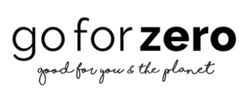Your Cart is Empty
**FREE (PLASTIC-FREE) SHIPPING OVER $89 IN AU | $9.95 FOR AU ORDERS BELOW $89**
Menu
-
- BRANDS
- New
-
A - F
- Aleph Beauty
- Amavasya Healing Store
- Baby Quoddle
- Banksia Pods
- Bare and Boho
- Bear & Kind
- Bearded Chap
- Beauty and the Bees
- Bee Green Wraps
- BioTuff
- Brightberry
- Buchi Brew Co
- Byron Bay Detox
- Chubby Bee
- Coconut Bowls
- Core Skincare
- Desert Shadow
- Downunder Wash Co
- Earth Greetings
- Eco Coconut
- Eco Art & Crafts
- Eco Max
- Eco Modern Essentials
- Eco Toothbrush
- Ecyo
- Eden Health Foods
- Ethique
- Ever Circle
- Ever Eco
- E.sup
- Femme Organic
-
G - N
- Gentle Habits
- Go for Zero
- Goodeau
- Good Change Store
- Good Cuppa
- Green Grip
- Haakaa
- Here and After
- Honeybee Wraps
- Honeysticks
- Ilo Wellness
- IME
- Jack n' Jill
- Jonny
- Kayu & Co
- Kelpy Bone
- Kiin Baby
- Kooshoo
- Laminated Cotton Shop
- Left-handesign
- Love Beauty Foods
- Magic Earth
- Mika Creations
- Miod
- My Mimi
- Natural Rubber Soother
- Natural Wonders
- No Nasties
- Noosa Basics
- Notely
- Nuebar
- Nutra Organics
- Nurtur Tea
- O - S
-
T - Z
- Tappwater
- That Red House Soapberries
- The Australian Natural Soap Company
- The Fabric Comb
- The Glitter Tribe
- The Keeper
- The Loose Tea Company
- The Naturool Co
- The Physic Garden
- The Swag
- The Tooth Faerie
- Thrive Tallow
- Togo Sun
- TOMbag
- TOM Organics
- Tooletries
- Urban Composter
- Urban Greens
- Urthly Organics
- Veggie Saver
- Viva La Body
- We Might Be Tiny
- Willelaine
- Winki Zinc
- Woohoo
- Wotnot
- ZeroCare
- Zone Yoga
- ✨ 15% off Eco Travel
- 🎄 Christmas Gifts
- SKINCARE & MAKEUP
- BATHROOM
- HOME
- FAMILY
- Zero Waste packs & Gifting
- BLOG
- ABOUT US
- SALE
-
- Login / Subscribe
-
Australia (AUD $)

**FREE (PLASTIC-FREE) SHIPPING OVER $89 IN AU | $9.95 FOR AU ORDERS BELOW $89**

Your Guide to Recycling in Australia: Top 5 Recycling Tips from the Expert
November 12, 2023 4 min read
We've all been there, the part where you are just about to drop that container into the recycling, but you wonder… How does this get recycled? Should I have removed that plastic window from the envelope? How rinsed does that tin need to be?
At Go For Zero, we frequently connect with recycling centres to gain insights into what can and can't be recycled, and why. Sandie, a seasoned recycling expert with over 20 years of experience, has shared her top 5 essential rules you can easily follow for effective recycling at home.
Time to take out the trash... responsibly, of course!
Sandie Shares 5 Keys to Recycling…
Rather than knowing EVERYTHING and every product that is a yes or no for your recycle bin, Sandie breaks it down into 5 simple rules to get it right quickly!
1. Keep it Clean…
So standing in front of your bin, the first question needs to be: Is it clean?
How clean? Simply put, we need to ensure we empty our food and drink content. So no leftover milk, chunks of pizza, half moulded yoghurt,.. This will contaminate our recycling.
Sandie advises to just give them a good rinse by using leftover dishwater. It does not need to be sparkling, but it needs to be empty of food, drink or other contents.
So, rinse? Yes.
2. Keep it Safe…
The second question to ask yourself needs to be: is it safe?
We must remember that people are also part of the sorting process, not just machines. To keep it safe for the workers, consider whether you would want whatever is inside the specific recyclable on your skin? I certainly wouldn't like an oven cleaner on me, or baby poo... Let's help by ensuring it's not sharp or containing chemical residue.
An important one to mention here are batteries. Batteries can cause the recycling trucks and facilities to catch on fire. It only takes one battery to do so, so batteries are a huge no no. You can drop these off at OfficeWorks or Bcycle Australia.
3. Keep it Simple...
Recycling is confusing, and we all want to do the right thing, but this is where wish-cycling comes in. Wish-cycling is tossing items into the recycling bin with the hope that they will be recycled, even when you are unsure if they are actually recyclable. While it is well-intentioned, wish-cycling can cause problems for recycling centres. When non-recyclable items find their way into the recycling stream, it can contaminate the recycling stream, which can make the sorting process more difficult and increase costs.
Here are Sandie's tips to simplify it.
1. Glass: only bottles and jars can go in. Nice and simple and nothing else.
- Light bulbs? It’s not a bottle or a jar, so no.
- Drinking glasses? It’s not a bottle or a jar, so no.
- Broken window glass? It’s not a bottle or a jar, so no. And this one should not make it to question 3 as it is not safe for the workers, which is question 2
2. Steel: only cans and aerosols
3. Aluminium: cans, aerosols and crushed foil. Remember foil needs to be the size of a golf ball so save up until it is big enough. More about this below.
4. Plastic: only bottles & containers. So what about a plastic lid? Well that is a no, because it is not a bottle or container!
4. Size DOES Matter…
So once you ticked all the 3 above questions, you have one last question to ask yourself before you can pop it in your recycling bin. This question changed the way I recycle...
1. Plastic
Let’s take a takeaway container LID. Is it clean? Yes, you cleaned it. Is it safe for the workers? Yes. Is it a plastic bottle or container? Hmmmm, no but the take away container is (and can be recycled), so why can't the lid be recycled? Size matters!

For the machines to pick up on the plastic, it needs to be big enough. Sandie shows us a little plastic yoghurt container as a reference. If your plastic has a depth similar to this plastic yoghurt container, then it can go in the recycling bin. The lid has no depth to it so will act like paper in the recycling centres.
So for the your question, think about the yoghurt pot. Is the plastic the same or bigger than our yoghourt pot? Then it goes in your recycling bin!
2. Glass
The computers are registered to collect potential broken glass down to the size of a $2 coin. If it is shattered glass (so smaller then $2), pop it in your landfills bin.
3. Lastly, paper
Let's give another example here. Cardboard bread tags… Although they are better than the plastics ones and a great initiative, they are still too small for recycling. The best chance to get these recycled is to pop them inside another larger object of that material, so these cardboard bread tags can go in a cardboard biscuit box for example. The same applies to steel lids, put them inside a steel can. Get it to yoghurt pot size or above!
5. Keep Rethinking…
While recycling helps, it’s great to rethink of ways the item can be reused or reduced at the source.
For example, harmful waste. Is there a way to cut those chemicals and waste altogether? (You know this is our forte).
Hard-to-recycle items
Did you know we have our own recycling program at Go For Zero? When you send us your hard to recycle items, you will receive a $10 voucher to make a waste-free swap with us.
Final thoughts...
Recycling is difficult because councils have different rules. While these 5 tips are applicable to most councils in Australia, always check with your council what is recyclable. You can do this by googling your "council name and recycling guide". This will always be your best resource.
We hope you've taken away so much new and helpful info GFZs! If you have anything we missed, or any other questions for the beautiful Sandie we would love to hear from you at askusanythign@goforzero.com.au.
Thank you for cleaning up this Earth with us xx
Leave a comment
Comments will be approved before showing up.
Recent Articles
- 5 Ways to Avoid Microplastics in Your Drinks December 05, 2025
- Ditching the Nasties: How to Keep Microplastics and PFAS Out of Your Water December 05, 2025
- Gift Wrapping Guide: How to Responsibly Dispose of Gift Wrap and 6 Zero-Waste Wrapping Ideas! December 05, 2025
- Dish and Laundry Block FAQ: Your Ultimate Zero Waste Cleaning Solution December 04, 2025
- Silicone vs Plastic: Top 5 Differences You Need to Know December 03, 2025
Subscribe
Sign up to get the latest on sales, new releases and more …
